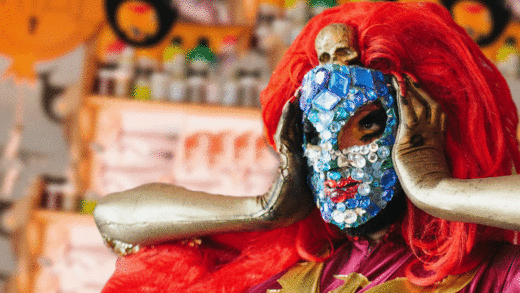Drag queens have been central figures in San Francisco’s LGBTQ movement since the 1966 Compton’s Cafeteria riot, when members of the LGBTQ community—including drag queens and trans women—fought back against police harassment, three years before Stonewall. Filmmaker Susan Stryker calls the riot at Compton’s, an all-night cafeteria in the Tenderloin, the “first known instance of collective militant, queer resistance to police harassment in United States history.”
The Compton’s Cafeteria riot shows that drag is political, and that it has occupied a central role in the queer liberation movement from the beginning—especially in San Francisco. In this spirit, The Changing Face of Drag, a KQED Arts story series running June 18–22, spotlights five Bay Area drag artists at the vanguard of their genre, pioneering new styles and evolving the idea of what drag can be.
In 2018, drag is more popular than ever—due in large part to RuPaul’s Drag Race, the TV competition that’s produced some of the genre’s biggest stars. But the real-life drag world is much more diverse than Drag Race, and no more so than in the thriving underground drag culture of the Bay Area.
The five performers featured in The Changing Face of Drag come from very different backgrounds. Each has their own approach. And their stories prove that drag is a continuously evolving art form that sparks conversations about gender, sexuality and culture while advocating for equality for all, one fake eyelash and silicone breastplate at a time.
—Nastia Voynovskaya, series editor


